I love the feeling.
I think, “Go me! Look at you go!” as I strike the pen through the list item.
But as good as it feels to cross things off, it’s not really about that. That’s not where the power of lists resides.
The power exists in making the list in the first place. Getting the thoughts out of your head and down on paper.
In his book Keep going: 10 ways to stay creative in good times and bad Austin Kleon states:
“Lists bring order to the chaotic universe. I love making lists. Whenever I need to figure out my life, I make a list. A list gets all your ideas out of your head and clears the mental space so you’re actually able to do something about them.
When I’m overwhelmed, I fall back on the old-fashioned to-do list. I make a big list of everything that needs to get done, I pick the most pressing thing to do, and I do it. Then I cross it off the list and pick another thing to do. Repeat.”
When I’m feeling really under the pump, I’ll go for a walk and scribble out a list while I’m walking.
I’m not sure which activity helps me more – the walking or the list making – but by the time I arrive home from my walk, I always feel less anxious and more in control.
If you haven’t been having much luck with to-do lists, you may have fallen into one of the following common traps:
If you look at your list and it says says things like ‘Mum’s birthday’ or ‘Study’, it’s time to make these list items crispy.
Crispy is a Behaviour Design term created by Stanford university Professor BJ Fogg. When you make a behaviour crispy, you get really clear on the specific behaviour you need to carry out.
Here are some examples I came up with to illustrate the difference between fuzzy and crispy list items:
Fuzzy to-do list item: Mum’s birthday
Crispy to-do list item: Call mum to wish her happy birthday after lunchFuzzy to-do list item: Study
Crispy to-do list item: Open Quizlet study deck and test myself for 5 minutes on the bus
When you ‘crispify’ a list item, you tighten it up. You make it crystal clear for your brain what you need to do next. This in turn makes it much easier for you to get started.
If your list is no longer working for you, feel free to abandon it and create a new one. As Psychiatrist Douglas Puryear says in his book Your life can be better:
“I make lists over and over, all day long. It’s not just about having the list; there is also benefit in making them. Writing down what I need to do is somehow calming and organizing, and therefore motivating. When I write things down, it’s as though I’m on top of them.”
Our brains get bored easily, so try making your list a little bit different every now and then.
Here are some simple ideas on how you can jazz up your next to-do list:
It doesn’t matter what medium or what materials you use to create your to-do list. What matters is that you get everything out of your head and you make each list item crispy.
If your to-do list is causing you to have a mini meltdown, back up. Ask yourself . . .
“Is this list too long? Can I cross a few things off?”
Create a short list from your big list – just three items (post-it notes are good for this). Then put away your long list. When you’ve completed those three items, create a new list of three from your long list.
During times of chaos, lists are your friends. Reach out and use this fabulous tool to lighten your mental load. You don’t need any special skills or talent to do this. Lists are for everyone.
Share This:
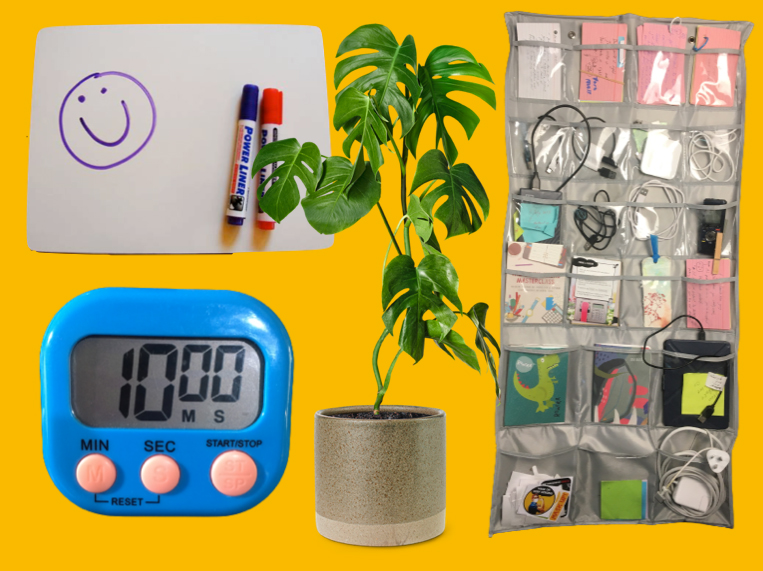
You need to start by doing something different.
As Paul Taylor says in his book Death by Comfort:
“Nothing changes if nothing changes”.
Over the years, I’ve read a lot of books and articles on the psychology of behaviour change. One thing is clear from the research literature: it’s much easier to change your behaviour by changing your context rather than changing your thoughts and attitudes.
In other words, the simplest ways you can create change is to set up your environment to make it easier to do the things you want to do and harder to do the things you don’t want to do.
In this blog, I explore different ways you can tweak your study space to make it easier for you to study and harder for you to get distracted.
Timers are super handy tools, especially when you’re lacking motivation.
Whenever I’m avoiding a task or not feeling in the mood to do something, I’ll say to myself “Let’s just do 10 minutes”. I start the timer and off I go. Usually by the 10 minute mark, the motivation has kicked in and I want to keep going.
Using a timer is a simple and easy way to push through mental blockages. It can also create a sense of time awareness and prompt you to take regular breaks.
Charging cables, flashcards, mini notebooks, and USB sticks: these are just a few examples of random little items that we need. But where do you put this stuff?
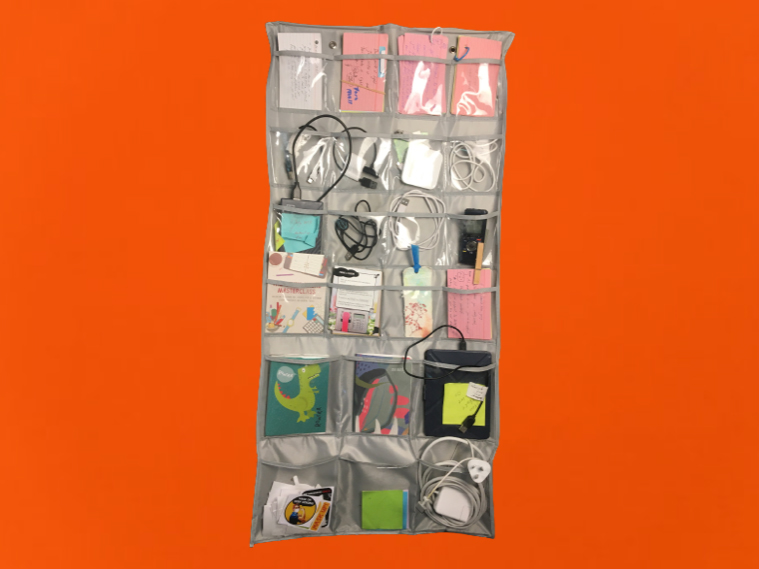
A vertical wall hanger with clear pockets (typically used for storing jewellery) works well for storing and separating these random but important items.
Feeling stressed in your study space? Perhaps it’s clutter that’s getting you down.
Take a moment to scan your environment. If your eyes land on a pile of objects and you find yourself feeling stressed and/or overwhelmed, take those items and dump them into a box. Now take that box and put it in another room. You can sort through these items later on.
Staying hydrated is super important when it comes to learning. Research shows even mild dehydration can impact students’ ability to learn and remember information.
But if there’s no water in sight, you’re probably not going to be taking regular sips.
I have a reusable drink bottle but some people find having to unscrew a lid a barrier to taking sips. If that’s you, have a jug of water and a glass nearby. You might also enjoy using a reusable straw (stainless steel or glass).
Being hungry sucks and it doesn’t serve you when it comes to learning. Your brain needs energy to think and learn. Where does it get that energy from? Food.
Make a start on stocking your fridge and pantry with plenty of healthy snack foods. My favourite snack foods include blueberries, strawberries, and pretty much any fruit, nuts, veggie sticks, and soy yoghurt.
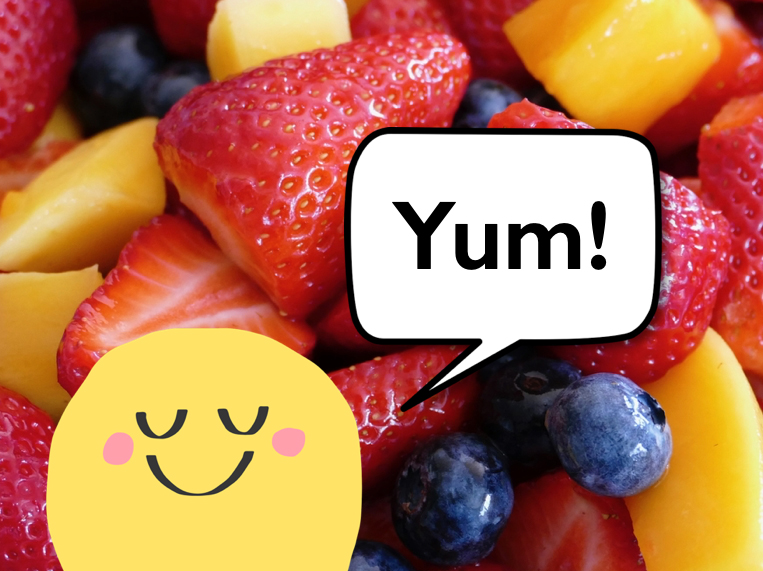
While you’re at it, get rid of any tempting ultra-processed junk food. This junk will mess with your ability to think and learn.
If I can’t see my work and items I need, they don’t exist. This is why I always store important items in clear storage containers and write things I need to do on bright yellow paper and colourful post-it notes. If it’s out of sight, it’s out of mind.
One trick I use is leaving myself post-it note reminders of what I need to do next after I complete each work session. These notes give my brain a clear direction of what it needs to focus on next, which means I’m less likely to get derailed.
When there’s a lot of things happening and multiple projects on the go, it’s easy to lose track of what you need to do.
Using open storage systems (e.g., open bookshelves or pigeonhole units) can be another effective way to keep track of all your projects. I use a pigeon hole to organise all my projects. This keeps them in sight and in mind.
I remember an academic coach once saying to me, “If you start the day by checking your email, you’ll be 10% less productive”.
She was spot on.
When you start the day with devices, this puts you in reactive mode. You feel less in control.
Here’s a little psychological trick I use to get myself into proactive mode: I lock my phone in a kSafe for the first 30 minutes of the day. My phone is already placed in the safe before I go to bed, which means all I need to do is spin the dial and press the button when I get up in the morning.
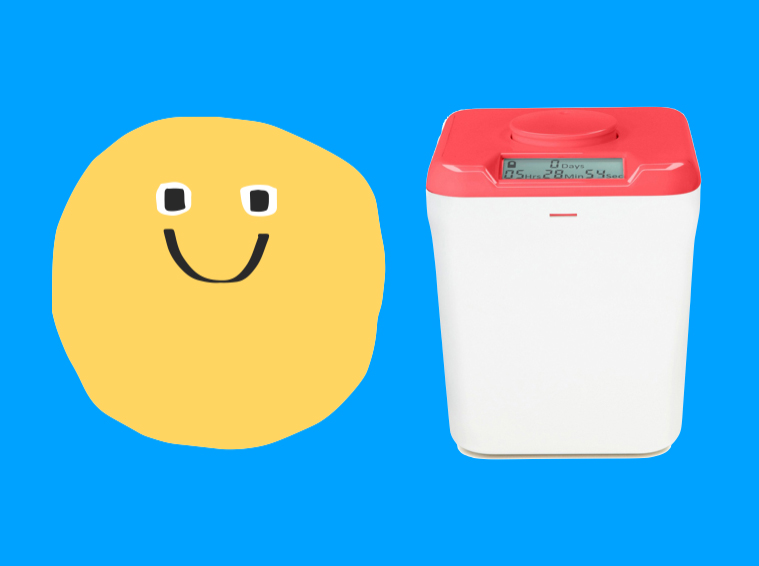
This simple action signals to my brain that I’m in control of my day (and not big tech).
Of course, you don’t need to buy a kSafe to stay off your phone. Placing your phone in a drawer (out of sight) or in another room will also do the job.
You use them to mow the lawn, but a pair of earmuffs work wonders for blocking out noise while you’re trying to study.
They also have signalling power. When you put them on, it signals to others (and your brain) that you are in work/study mode. When you take them off, you are free to play, rest, and do whatever you like.
Having a yearly planner stuck up on your wall can help to create a sense of time awareness. You look up at the planner and you can see in one glance how much time you have between now and when a project is due or when an exam is scheduled.
Indoor plants have been found to boost creativity. But certain types of indoor plants, such as English ivy and the Money plant, also purify the air.
You don’t need to create a jungle to experience the benefits of indoor plants. One or two plants in nice colourful pots is all you need to freshen up your space.
Have you considered working on your feet and incorporating some movement into your study sessions?
Active workstations, such as sit-stand desks, cycle desks, and treadmill desks, help to break the sedentary work cycle, get the blood pumping more efficiently up to your brain, and give you a cognitive boost.
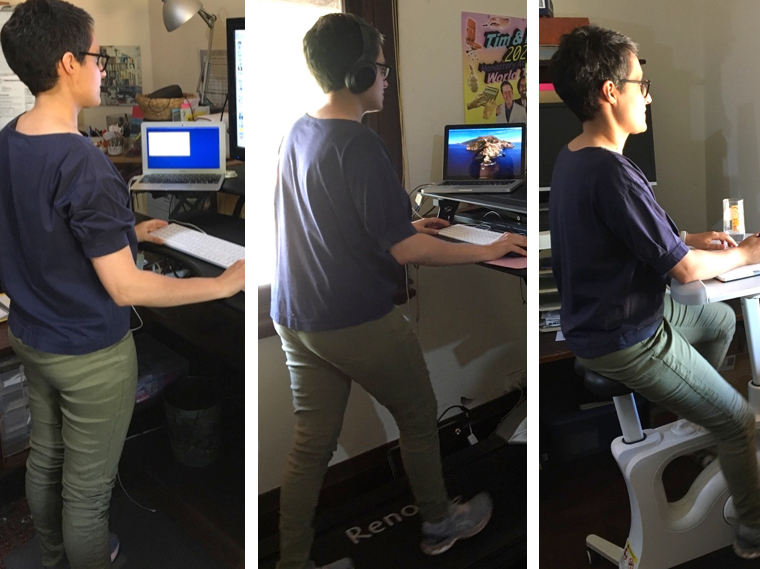
If you prefer to stay seated while you study, that’s no problem. Just make sure you get up and move every 25-30 minutes. Take an exercise snack.
An exercise snack is a quick 30-60 second bout of exercise. I have a few small pieces of exercise equipment strategically placed in my study space to mix up my exercise snacks.
Depending on what you like to do and the space you have available, here are a few ideas:
• Kettlebell
• Dumbbells
• Resistance bands
• Skipping rope
• Gymstick
• Hula hoop
If you feel good in your study space, you’re more likely to want to spend time there. One of the simplest ways to spruce up your space is with colourful and inspiring pictures.
Up on my walls is a colourful world map, a poster from a memorable comedy show I attended with my brother, and a framed piece of children’s artwork.
What do these things all have in common?
They make me feel good. And when I feel good, it’s easier to think, focus, and learn.
After looking at a screen for 25 minutes or so, get down on a yoga mat and do some gentle stretches. If the mat is already rolled out on the floor, it’s a lot easier to get down and stretch your body.
This is a designated spot for all your school items (e.g., books, files, reference materials, unit outlines, practice exam papers, and notes). Need to find something to complete a project or study for a test? There’s only one place it can be: in the magic spot.
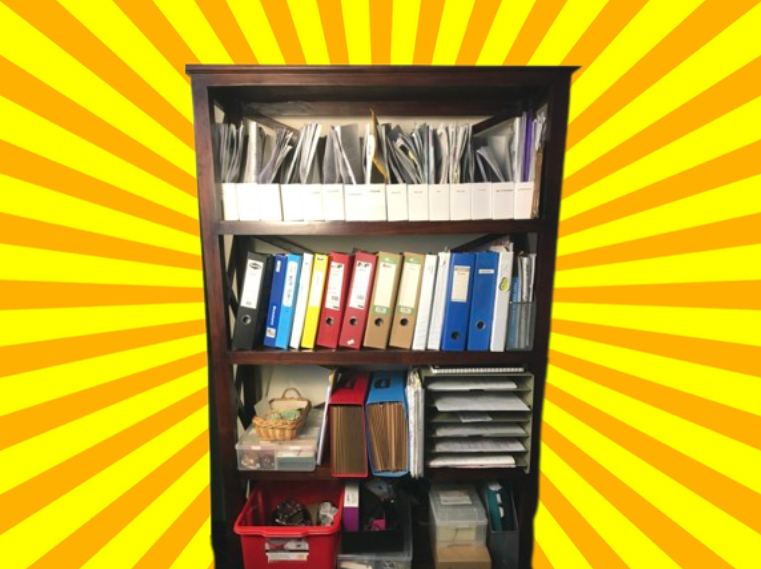
When your work gets difficult, it’s too easy to escape to social media, YouTube, and Netflix. To stop yourself mindlessly checking these apps, activate an Internet blocker app such as Cold Turkey or Freedom.
It’s not just Big Tech companies that can distract us. Often we distract ourselves with all kinds of random thoughts.
How do we handle these thoughts?
You can capture them in a notepad that’s strategically placed within arms’ reach. When a random thought strikes, write it down. You don’t have to act on every thought straight away.
Think of this notepad as your ‘Thought Inbox’. Once you’ve written the thought down, it’s not going anywhere. You can return your focus to the task at hand and deal with these thoughts at a later time.
Ads online are like advertising in public spaces: they constitute visual clutter. They also stir up consumptive desires and frequently throw you off course.
You can eliminate a lot of online ads by installing an adblocker plugin. I use Adblock Plus.
When I’m feeling nervous about putting ideas down on paper, I go to my whiteboard. It’s less scary to jot down ideas on a whiteboard.
If it doesn’t work out, that’s okay. You can easily wipe it all away.
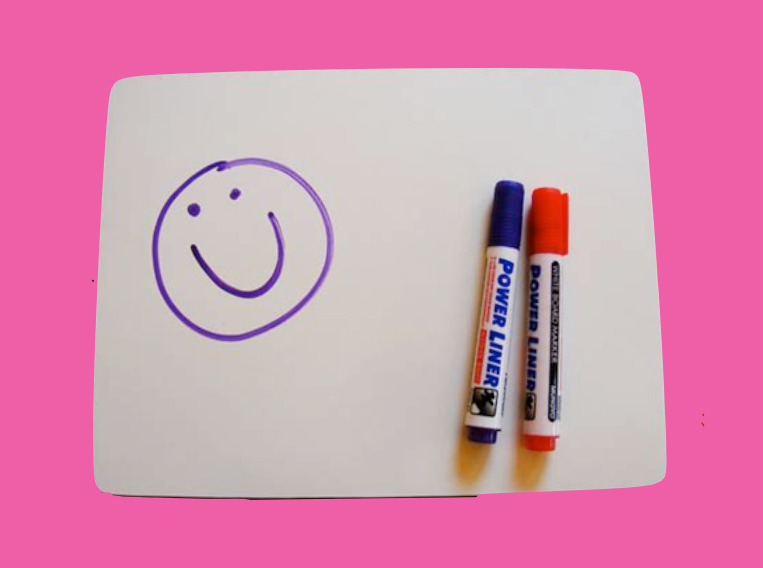
Each of these strategies may not seem like much on their own. But when combined, they can have a big impact on your ability to focus, learn, and get things done.
Like anything in life, the key is not to get bogged down by a sense of overwhelm. You don’t need to make all of these changes all at once. Just get started with one or two.
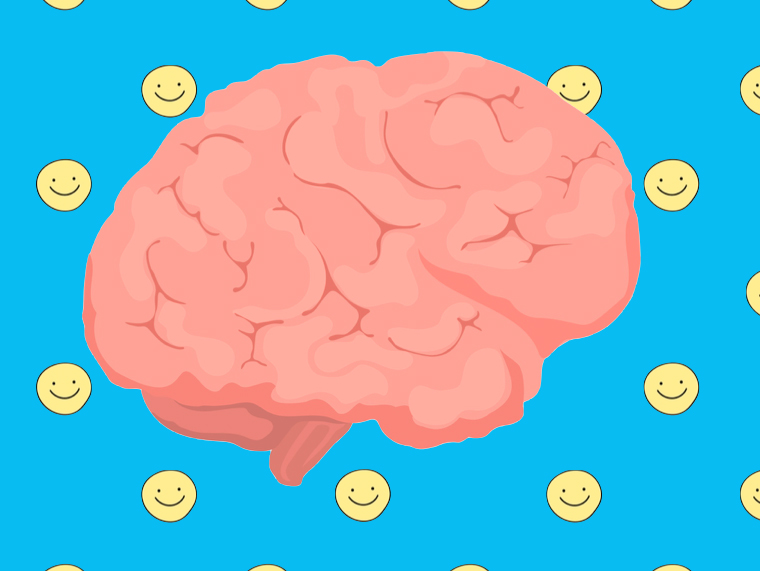
About 10 years ago I met the beloved Australian celebrity Costa Georgiardis from the television show Gardening Australia.
I was blown away by Costa’s energy and enthusiasm.
He was exactly like he appeared on TV. But he wasn’t hamming it up for the camera. Costa was the real deal.
He was high on life.

I’ve heard that people often ask Costa “Why are you so energetic?”, “Why are you so up?”, and “Don’t you get tired?”
Some people feel tired just being around Costa (check out this video to get a sense of Costa’s energy).
What’s the difference between motivated and energised people and less motivated people who struggle to get off the couch?
According to Stanford professor Dr Andrew Huberman the difference has everything to do with dopamine.
In this blog post, I want to explore how dopamine works and how you can adjust your dopamine levels to experience more motivation, focus, and energy in a safe and healthy way. Let’s go!
Dopamine is a neurotransmitter that is involved in reward processing. Your brain releases this molecule whenever it anticipates a reward.
In a healthy brain and environment, dopamine plays an important role in keeping you motivated, focused, and on track with your goals.
Unfortunately, this natural feedback system can be hijacked by big tech companies and fast food corporations.

Tonic dopamine is your baseline level of dopamine that circulates through your system. People who are generally enthusiastic and motivated have a high baseline dopamine. But if you struggle with motivation and often feel lethargic, chances are you have a low baseline dopamine.
But then there’s phasic dopamine. This is where you experience peaks in dopamine above your baseline level. These peaks occur as a result of engaging in certain behaviours and/or consuming certain substances.
For example, social media companies train users to seek out quick, easy, and frequent hits of dopamine. Fast food companies engineer foods that have just the right amount of salt, fat and/or sugar to release big spikes in dopamine. This make you want to eat more of the food product and keep going back for more.
It’s important to understand that these peaks in dopamine don’t last.
After engaging in a dopamine-rich activity, you will experience an inevitable drop in dopamine. And this drop will be below your baseline level.
It should come as no surprise that when you’re in a dopamine deficit state you don’t feel very good. You experience pain and discomfort.
According to Psychiatrist Dr Anna Lembke this is our brain’s way of trying to bring everything back into balance and establish homeostasis.

In the book Dopamine Nation Dr Lembke talks about how pleasure and pain are experienced in overlapping regions of the brain. She states:
“Pleasure and pain work like a balance”.
If you tip to the side of pleasure or pain, self regulatory mechanisms kick in to bring everything back into balance.
But you never want to tip to one side for too long. Dr Lembke states:
“With repeated exposure to the same or similar pleasure stimulus, the initial deviation to the side of pleasure gets weaker and shorter and the after-response to the side of pain gets stronger and longer, a process scientists call neuroadaptation . . . we need more of the drug of choice to get the same effect.”
In other words, consuming more of a dopamine-rich substance or behaviour is bad for your brain. It will leave you in a dopamine-deficit-state.
And when you’re in this state, it’s much harder to do your school work.
There are a number of simple things you can do to regenerate your dopamine receptors and increase your baseline dopamine. I’ve listed several strategies below.
Before you start your work or study, you want to avoid engaging in activities that will cause spikes in dopamine. If you watch TikTok videos or play video games before sitting down to do your homework, this is going to make your work feel a lot more painful and boring.
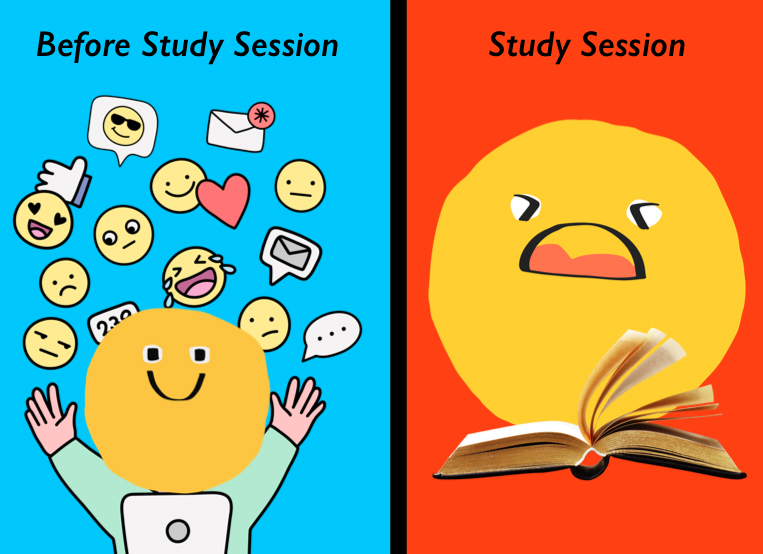
Here’s why . . .
Dr Huberman states that how motivated you feel to do a task depends on your current dopamine levels and what previous peaks in dopamine you have experienced. This is important to understand because with this knowledge, you can create routines and habits to conserve your dopamine and motivation for pursuing your goals.
With this in mind, I’ve recently simplified my morning routine in the following ways:
• I don’t start the day by looking at my phone or computer
• I exercise without listening to music
• I have a healthy breakfast of overnight oats and berries rather than a super sweet smoothie
• I have a cold shower (more on why I do this below)
Whilst this may sound boring, it’s had a dramatic impact on how easy it is for me to get stuck into doing my work.
The term ‘Dopamine Detox’ is a little misleading since it’s technically not possible to detox from dopamine. Nevertheless, the idea is a good one.
When you engage in a dopamine detox, you’re taking a break from engaging in dopamine-rich activities (e.g., consuming junk food, going on social media, and watching Netflix). This will give your dopamine receptors a chance to regenerate.
After taking a dopamine detox, you’ll probably notice that simple things like eating basic wholefoods or going for a walk are much more pleasurable. As Dr Huberman points out:
“Our perception for dopamine is heightened when our dopamine receptors haven’t seen much dopamine lately.”
Research shows that cold water therapy (i.e., being submerged in cold water) can increase your dopamine by 250% above your baseline level.

Let’s put that in context:
Chocolate increases dopamine by 150% above baseline
Alcohol increases dopamine by 200% above baseline
Nicotine increases dopamine by 225% above baseline
Cocaine increases dopamine by 350% above baseline
Amphetamines increases dopamine by 1100%
You need to remember that these peaks in dopamine are followed by a sudden crash below your baseline level. Let’s not overlook the fact that chronic substance abuse causes brain damage and can be fatal.
Unlike other addictive substances, cold showers create peaks in dopamine that can last for several hours. You also don’t experience the subsequent dramatic crash below your baseline level.
Word of warning: Before you turn on the cold shower tap or start running an ice-bath, it’s important to be aware that people can go into shock when plunging themselves into cold water. Please be careful!
If cold showers aren’t really your thing, try increasing your dopamine with exercise. Exercise has been found to increase dopamine by 130% above your baseline level.
In the book Move The Body, Heal The Mind, neuroscientist Dr Jennifer Heisz says:
“Exercise increases dopamine and repopulates dopamine receptors to help the brain heal faster during recovery [from addiction]. Although all forms of exercise can do this, runner’s high may do it best.”
Look for ways to make it harder to engage in the dopamine-rich activities. Create barriers and/or friction points to stop you from mindlessly seeking quick shots of dopamine.
For example, I recently noticed I had a problem with compulsively checking my phone. Whenever I felt bored or lonely, I’d check my phone to see if I’d received any messages. I didn’t like the fact I was doing this but I found it hard to stop. What could I do?
I could use a dumb phone.
I found a ‘seniors’ flip phone that allowed me to do basic things like make calls and send texts. But sending texts is not easy! I have to type in each letter and change from upper to lower case. It really puts you off wanting to text your friends.
Since switching to a dumb phone, the number of times I touch my phone each day has significantly decreased.

As you do your work, praise yourself for the effort you’re putting in. Doing this can increase the dopamine you have for the activity.
Dr Huberman suggests saying the following while you’re doing painful work:
“I know this is painful. But you need to keep at it. Because it’s painful, it’s going to increase my dopamine later and I’m doing this by choice.”
We live in a dopamine-rich world. It’s so easy to flood your brain with quick hits of dopamine that feel good in the moment but leave you feeling flat and irritable shortly after. These peaks in dopamine make it harder for us to pursue our goals by undermining our motivation.
No matter what your current dopamine baseline is, just remember this: you have the ability to increase your dopamine in a healthy and sustainable way. Kick-start the process today!
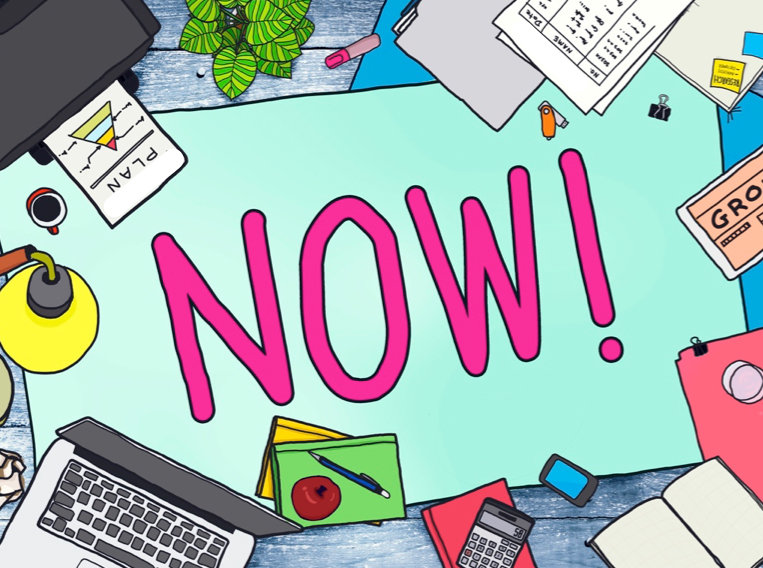
All of us have had the experience of watching videos instead of writing an essay. We can all relate to telling ourselves, “I’ll do it tomorrow”.
The problem is our brains are wired for comfort. We’ll try to do everything we can to avoid experiencing pain and discomfort. But through our avoidance behaviour, we ultimately create more pain and suffering for our Future Selves.
You can avoid working on a project, but eventually your Future Self will have to pay the price.
As Dr Benjamin Hardy states in his book Be Your Future Self Now:
“The more you put your Future Self in debt in terms of health, learning, finances, and time, the more painful and costly will be the eventual toll. There will be a lot of interest to pay if you continually accrue debt.”
This is why it really helps to cultivate habits and develop systems that help you get started with your work early (well before the deadline).
Over the last few months, I’ve come across several novel and effective ways people are combatting procrastination around the world. I write about each of these below.
The Manuscript Writing Café is a place where writers go to avoid distractions and meet their writing deadlines.
This is a disciplined environment where the owner Takuya Kawai won’t tolerate socialising over drinks. As Kawai states in a social media post:
“The Manuscript Writing Cafe only allows in people who have a writing deadline to face! It’s in order to maintain a level of focus and tense atmosphere at the cafe! Thank you for your understanding.”
In order for this café to run smoothly, Kawai has established a set of rules writers must follow upon entering.
Here’s how it works:
When you enter the café, you commit to a specific goal (how many words you want to write) and a time you plan on finishing. You write this down on a goal card.

You then select from three levels of progress checks:
1) Mild: You get a progress check at the time of payment
2) Normal: You get a progress check every hour
3) Hard: Staff frequently stand behind you and watch you working.
You can’t leave the café until you finish your writing goal.
Once you complete your writing goal, your goal card is stamped with a cute Japanese stamp and displayed on the wall with all the other completed goals.
Let’s unpack the psychology of how this clever café works . . .
Besides the fact you are working in a focus friendly environment away from all your usual distractions, it helps that you are in the company of other people who are also working towards clear goals.
When a staff member stands over your shoulder, you don’t want them to see you scrolling through social media or checking your email. You want them to look at you and think, “Oh wow! This person is super focused and on a roll. Look at them go!”
If you go to this café enough times and achieve a feeling of success after completing each writing goal, your identity will begin to shift. Instead of seeing yourself as someone who procrastinates, you start to see yourself as the sort of person who just gets on with doing the work.
It also costs money to be there. It is 130 yen ($1.30 AUD) for the first 30 minutes and then it increases to 300 yen ($3 AUD) per hour. Being charged a fee provides incentive to just get on with doing your work (procrastination equals parting with your hard earned money).
The owner insists his café is a supportive environment and his tactics are not heavy handed. He states:
“As a result, what they [the writers] thought would take a day was actually completed in three hours, or tasks that usually take three hours were done in one.”
You may not have an anti-procrastination café in your neighbourhood, but there’s nothing to stop you from setting up your own writing café experience and applying the same or similar rules.
This is what a group of PhD students and I did to help us write our theses (you can read more about this here).
This event is run by a number of universities around the world. Students are encouraged to come along with a work project they have been avoiding.
Educators, mental health nurses, therapy dogs, librarians, and academic coaches are on standby, ready to help students tackle their specific procrastination issues.

For instance, if a student is procrastinating with writing an essay because they don’t know how to write an academic essay, they can get help from an academic coach.
If a student is procrastinating because they get easily distracted, they can receive coaching on various strategies, such as the Pomodoro Technique, that will help them to deal with distractions and focus their mind.
When it comes to procrastination, there is no one size fits all approach. Nights Against Procrastination are popular and effective because they offer students a smorgasbord of different strategies and solutions to combat procrastination.
The Beeminder app is a commitment device/goal setting app that helps you stay on track with achieving your goals. Here’s how it works:
You commit to a goal (e.g., Read 70 pages per week). You set a daily target (e.g., 10 pages per day). If you get derailed from achieving your goal, you get stung with a charge from your credit card (you pledge the particular amount).

It sounds harsh but this app is your accountability buddy. There’s a real consequence associated with not engaging in the behaviour. This can give you the extra motivational boost you need to make a start.
The great thing about this app is it integrates with other apps and programs (e.g., Fitbit, Garmin, Duolingo, and RescueTime). Once you set up these integrations it’s a lot harder for you to weasel out of your goals. The data gets automatically imported into the Beeminder app and the data speaks for itself. You either achieved your daily goal or you didn’t.
If you’re going to use this app, you need to be really clear about your goals. And you need to be serious about achieving them because let’s face it, losing money hurts.
Cave Days are online focused work sprint sessions that take place on Zoom. You’re instructed to leave your camera on, put your phone away, close any unnecessary tabs, and work for 45 – 52 minutes. Before your work sprint session, you set a goal for what you want to accomplish.

These work sessions are facilitated by a ‘Trained Cave Guide’. The Cave Guide doesn’t tell you the exact time the session will go for because they don’t want you to be watching the clock the entire time. At the end of each work session, your Cave Guide will facilitate short break activities.
If you want to check this out, you can register for a free 7 day trial to see if this work method works for you.
There are many different ways you can combat procrastination. But be careful – searching for the perfect solution can become a form of procrastination!
The thing is there is no perfect solution. When it comes to doing difficult work, here’s what I find makes a difference: having your phone away from your body (preferably in another room), being clear on what you need to do, taking a deep breath, and getting started with a small task (even if you don’t feel like doing it).
Dr Jane Genovese delivers interactive sessions on learning to learn, combating procrastination, exam preparation, how to focus in the age of distraction, habit formation and much, much more!
Get FREE study and life strategies by signing up to our newsletter:
© 2024 Learning Fundamentals